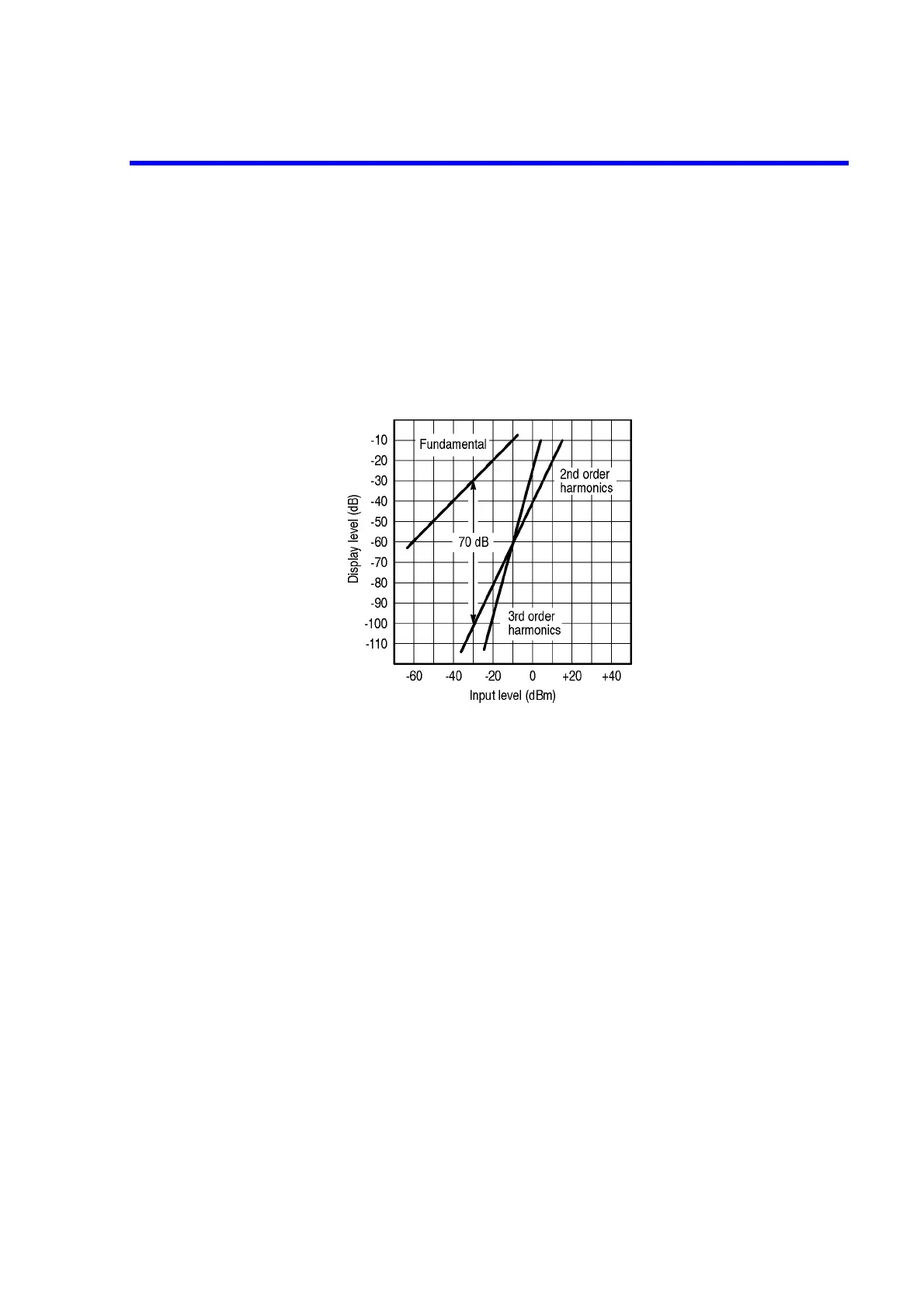R3131 Spectrum Analyzer Operation Manual
APPENDIX 2 GLOSSARY
A2-3
Non-higher Harmonic Spurious: This is a spurious signal of a certain inherent frequency generated by
the spectrum analyzer itself. This is also called residual response.
Spurious Response
This is distortion caused by higher harmonic spurious signals generated in the input mixer when the signal
level is increased.
The range that can be used without distortion varies according to the input level of the basic wave: in the
example shown below, the range is -70 dB for an input level of -30dBm. If the input signal level is too great,
the input attenuator is used to decrease the signal fed to the mixer so that a proper input level can be obtained.
Figure A2-3 Spurious Response
Noise Sidebands
Spectrum analyzer efficiency is reduced by noise generated in the local oscillator and phase lock loop of the
analyzer. This noise will appear in the vicinity of the spectrum on the screen.
To compensate for this, the sideband of the analyzer is defined so that signals out of the sideband can be
analyzed in a certain range. This range is called the noise sideband.
The spectrum analyzer's noise sideband characteristics are shown in the following example:
Example: Suppose the noise level measured in the resolution bandwidth of 1 kHz is -70 dB at 20 kHz apart
from the carrier. The noise level is normally expressed by the energy contained in the 1 Hz
bandwidth (Figure A2-4(b)).
With a bandwidth of 1 Hz, the following applies: Since the value is -70 dB when the bandwidth
is 1 kHz, the signals within the 1 Hz bandwidth will be lower than this by about 10 log 1 Hz/1
kHz [dB], or about 30 dB; consequently, it is expressed as -100 dB/Hz at 20 kHz apart from the
carrier when the resolution bandwidth is 1 kHz.
Dec 1/97
